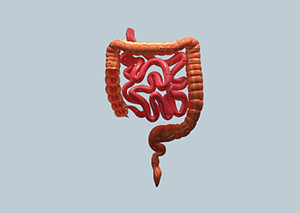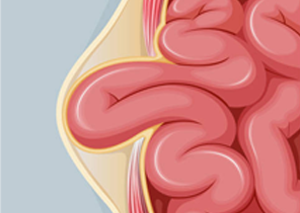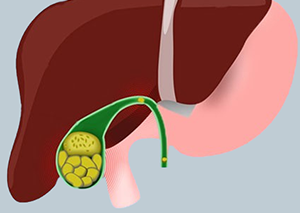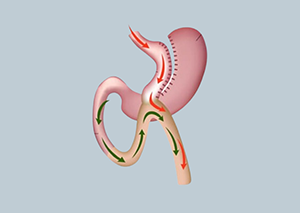
What is Endoscopy Surgery?
Laparoscopy — surgery done through one or more small incisions, using small tubes and tiny cameras and surgical instruments — was one of the first types of minimally invasive surgery. Now a days full HD vision in the camera is readily available and also its compatible with 3D laparoscopic viewing systems, which makes surgery easier.
In minimally invasive or laparoscopic surgery, doctors use a variety of techniques to operate with less damage to the body than with open surgery. In general, minimally invasive surgery is associated with less pain, a shorter hospital stays and fewer complications.
Another type of minimally invasive surgery is robotic surgery. It provides a magnified, 3-D view of the surgical site and helps the surgeon operate with precision, flexibility and control.
Continual innovations in minimally invasive surgery make it beneficial for people with a wide range of conditions. If you need surgery and think you may be a candidate for this approach, talk with your doctor.
Types of minimally invasive surgery
Surgeons perform many minimally invasive surgeries, including:
- Anti-reflux surgery, sometimes called hiatal hernia repair, to relieve gastroesophageal reflux disease (GERD)
- Cancer surgery, for example cancer of food pipe, stomach, intestine etc.
- Colectomy to remove parts of a diseased colon.
- Colon and rectal surgery.
- Gallbladder surgery (cholecystectomy) or bile duct surgery.
- Liver abscess or cancer surgery.
- Bariatric surgery, (all obesity related surgery)
- Gynaecological surgery
- Splenectomy to remove the spleen
- Thoracic surgery, such as video-assisted thoracoscopic surgery (VATS)
Why it’s done
Minimally invasive surgery emerged in the 1980s as a safe and effective technique to meet the surgical needs of many patients. In the last 20 years, many surgeons have come to prefer it to traditional (open) surgery, which requires larger incisions and, usually, a longer hospital stay.
Since then the use of minimally invasive surgery has expanded widely in many surgical specialties, including pancreas and liver surgery. Talk with your doctor about whether you would be a good candidate for this surgical approach.
Risks
Minimally invasive surgery uses smaller surgical incisions, and it’s generally less risky than traditional surgery. But even with minimally invasive surgery, there are risks of complications with anesthesia, bleeding and infection.
What Are the Benefits of Minimally Invasive Surgery?
- Shorter hospital stays
- Quicker recovery times
- Less pain and discomfort
- Less chance of infection and bleeding
- Much smaller scars
- Less dressings following surgery
What Happens During Minimally Invasive Surgery?
Someone having minimally invasive surgery will get anesthesia to “sleep” through the procedure. Then, the surgeon inserts the endoscope/ laparoscope. Surgeons can put an endoscope into the body through:
- The body’s natural openings (like the nostrils or mouth) or Tiny cuts in the body
Images from the endoscope are shown on monitors in the operating room so surgeons can get a clear (and magnified) view of the surgical area.
In some minimally invasive procedures, special surgical tools or instruments are inserted through other small incisions. The surgeon uses these to explore, remove, or repair a problem inside the body.
There are many different types of endoscopes. Some have tiny surgery tools on the end. Some are flexible, while others are stiff.
The kind of endoscope used depends on the surgery, and might have a different name. For example:
- Colonoscope — for procedures done inside the colon (such as a colonoscopy)
- Laparoscope — for surgeries inside the belly (laparoscopic surgery)
- Thoracoscope — for procedures in the chest (thoracoscopic surgery)
Sometimes during minimally invasive surgery, the surgeon might have to switch to a traditional surgery after looking inside the body. This can happen if the problem is different from what the surgeon expected or whenever its not possible to deal with it via laparoscopy.
One should always be prepared for the open surgery whenever undergoing laparoscopic surgery.
What Are the Types of Minimally Invasive Surgery?
Minimally invasive surgery usually falls into these categories:
- Endoscopy: The surgeon uses the endoscope itself to do the procedure. The endoscope goes in through the body’s natural openings, without the surgeon making any cuts.
- Laparoscopy: Using small cuts (sometimes called “keyhole” cuts or incisions), the surgeon guides the endoscope and special surgery tools into the body.
- Robot-assisted surgery (robotic surgery): The surgeon makes several small cuts to guide the endoscope and robotic tools into the body. From there, the surgeon controls the surgery while sitting at a nearby computer console.
Are There Any Side Effects from Minimally Invasive Surgery?
In laparoscopy, doctors insufflate the inside of the belly. This means they add carbon dioxide gas to create space in the abdomen, giving them a better view of the surgical area. They release the gas at the end of the procedure. Sometimes, small pockets of gas remain and can irritate the diaphragm , causing shoulder pain. This pain usually doesn’t last more than a day.



